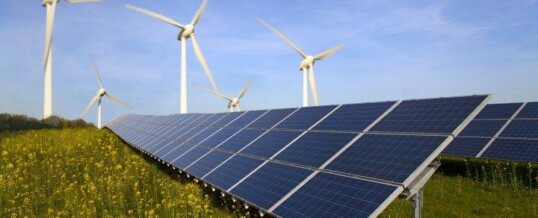
McLeod Group guest blog by Ryan Katz-Rosene, November 19, 2019
Yesterday’s blog highlighted the contradictions between economic development and climate action, focusing on the oil and gas sector. However, that is not to say that there’s no possible win-win scenario, even in the Prairies. In fact, numerous opportunities await, with four obvious areas of opportunity: a) renewable energy; b) regenerative agriculture; c) oil well reclamation; and d) alternative fuels.
The renewable energy opportunities in Alberta and Saskatchewan are exceptional. The potential for wind power, solar energy, and geothermal are orders of magnitude greater than presently installed capacity of those energy technologies. They could be expanded with the aim of generating tens of thousands of green jobs and billions of dollars in economic activity over the next decade.
The Prairie provinces are also agricultural powerhouses. While agriculture presently emits about 8.4% of Canada’s greenhouse gases, the switch to regenerative practices like no-till crop production or grassland conservation grazing have potential to sequester enormous amounts of CO2. That would offset some of those emissions, all while producing high-value food commodities and generating other ecosystem benefits, relating to biodiversity, soil quality and watershed management.
After decades of oil and gas development, Western Canada has a significant problem on its hands, with 139,000 inactive or abandoned oil wells requiring clean-up. Alberta’s share of the clean-up will cost $260 billion. As Regan Boychuk and Avi Lewis recently pointed out, this could be interpreted as a $260 billion opportunity. One of the obvious benefits is that the same jobs which were created by the drilling industry could be sustained by substantial investments in the reclamation industry. Since reclamation involves restoring topsoil and re-establishing vegetation, these projects would also support additional carbon sequestration.
Finally, alternative fuels offer tremendous promise in the Western provinces as well, particularly since they are linked to existing sectors such as agriculture, forestry and fossil fuels. There are a number of different kinds of low-carbon alternative fuels.
Biofuels are in theory carbon-neutral because they are made using crop by-products or other materials, such as forestry residues and waste from the agri-food sector. They thus return CO2 to the atmosphere in a cyclical manner when burned – as opposed to burning fossil fuels, which just pumps additional CO2 in the atmosphere.
Hydrogen is another proposed alternative fuel for the transport sector. There is presently a carbon-neutral trucking pilot project in Alberta underway. It is fuelled entirely by hydrogen, which only emits water when burned.
The most common source of hydrogen is fossil fuel (of which there is no shortage in Western Canada!). One recent scientific effort has found a way to extract hydrogen from oil deposits underground, leaving the carbon dioxide underground as well. This is also useful for a third kind of alternative fuel known as electrofuels. They combine hydrogen with carbon dioxide sucked out of the air to produce synthetic hydrocarbons that mimic fossil fuels, but are carbon-neutral.
In many ways, these four opportunities are already being explored. The renewable energy sector is red hot in the Prairies. The expansion of no-till agriculture across the Prairie provinces, which started decades ago, has increased yields, reduced fertilizer and fuel costs and continues to support the drawdown of CO2. This year, there were more decommissioned wells than drilled wells in Alberta. One report on bioenergy found that between 2007 and 2014, bioenergy projects in Alberta produced a savings equivalent to 11 million tons of CO2 and gave rise to a $2 billion dollar industry supporting thousands of jobs.
But there’s a catch. These climate mitigation and economic development opportunities will only be truly maximized if they receive the requisite levels of support from the rest of Canada.
The federal government in particular has an essential role to play. Instead of extending olive branches in the form of pipelines, the feds should get out of the oil business and focus their efforts on achieving a genuine, just transition led by the innovative people of the Prairies. Instead of merely paying lip service to incentives for clean energy through tax breaks, Canada ought to fork over major investment dollars – in research, development and, in particular, support for new infrastructures required for this transition. Instead of centring its economic development strategy on getting Alberta oil to tidewater, the Trudeau government ought to recognize the vulnerabilities lurking behind high-cost synthetic bitumen in a very volatile world market. Finally, the government should support indigenous leadership in climate change mitigation, particularly by fully implementing the 94 calls to action laid out by the Truth and Reconciliation Commission.
The post-2014 downturn in Alberta has exacerbated sentiments of Western alienation. The resurgence of secure, well-paying jobs in the region could help reduce these tensions. The Trudeau government must recognize the opportunity before it. It needs to tackle economic development, national unity and climate change all at once. There’s not enough time left to keep making the same mistakes as before.
Ryan Katz-Rosene is an Assistant Professor at the University of Ottawa’s School of Political Studies and the President of the Environmental Studies Association of Canada.
The McLeod Group recognizes that climate change is a global issue that requires action at many levels. These two blogs explore some Canadian perspectives. Future blogs will examine global dimensions.
